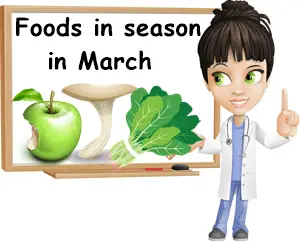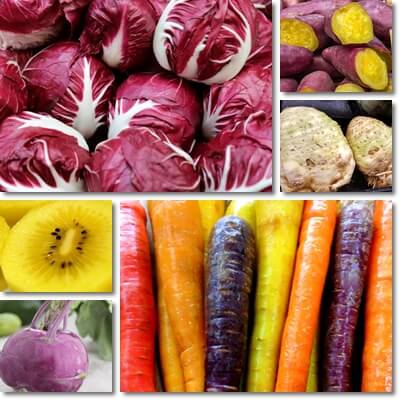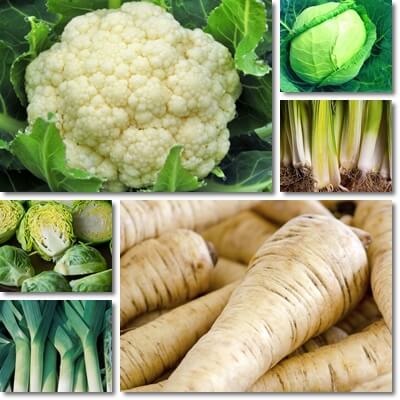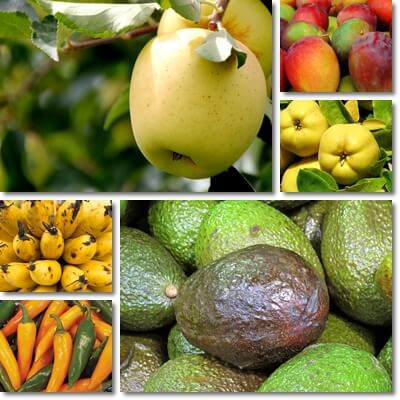What foods are in season in March? Despite the month of March marking the transition from winter to spring, there is a lot of variety when it comes to seasonal fruits and vegetables you can eat this time of the year. From fresh and dried mushrooms to aromatic fruits and nutritious vegetables, there are plenty of foods that come into season in March, or continue their season into this month.
What’s in season in March?
Avocado
Avocado is in season all year long, not just in March. Avocado has a good content of potassium with benefits for high blood pressure.

Bananas
Bananas are in season in March and the rest of the year. Naturally high in vitamin B6, bananas help produce hemoglobin and boost the capacity of hemoglobin to absorb oxygen, with anti anemia effects.
Beetroot
Beets natural season spans late fall to early spring. Beetroot contains nitrates that get converted into nitric oxide following digestion which relaxes and dilates blood vessels for lower blood pressure numbers.
Bell peppers or sweet peppers
In warm climates, bell pepper plants live for two years helping provide an endless supply of fruit. Bell peppers are extremely high in vitamin C with anti-inflammatory, antioxidant and antiaging benefits.

Broccoli
Broccoli is naturally in season November through March, give or take. Raw broccoli is high in vitamin C with antiaging effects and anti-inflammatory benefits and has folate for pregnant women.
Broccoli rabe
Broccoli rabe is a fall to spring seasonal vegetable related to broccoli, and Italian cuisine specialty. Broccoli rabe is a source of anticancer compounds and nutritionally dense.
Brussels sprouts
Brussels sprouts are an off-season anti-inflammatory and anticancer food and have depurative and prebiotic effects.
Cabbage
Cabbage is naturally in season late fall through spring, but available year long. Cabbage is anti-inflammatory, and has antiaging and anticancer properties from organic sulfur compounds.
Carrots
Carrots are in season in March as well as the rest of the year. Orange and yellow carrots are good for eyesight, red carrots lower blood pressure, while purple carrots and black carrots have anticancer anthocyanin antioxidants.
Cauliflower
Cauliflower is very low in calories and great for losing weight. Orange cauliflower is good for eyesight and reduces risks of cataract. Purple cauliflower has anthocyanin antioxidants with proven anticancer properties.
Celeriac or celery root
Celeriac has vitamin K which regulates calcium metabolism and phosphorus which actively contributes to bone formation. It is a good food to eat for strong bones and teeth.
Celery: leaf celery and Chinese celery
Leaf celery and the fairly similar Chinese celery are low in calories, and high in vitamin K with anti-inflammatory benefits. With a good content of folate, leaf celery and Chinese celery help combat anemia.

Chard
October through April is the second big season of the year for chard. Chard is very low in calories and high in iron which helps combat tiredness and fatigue. It also has vitamin C to boost iron absorption.
Chicory: Belgian endive or witloof
Belgian endive is in full season winter through spring. Belgian endives are actually not true endives, but a type of common chicory. Bitter tasting and low calories, they stimulate digestion and help with weight loss.
Chicory: radicchio
Radicchio is a type of magenta-colored chicory. Radicchio is rich in pigmented antioxidants, and holds benefits for weight loss and digestion.
Chicory lettuce: sugarloaf chicory or Catalonian lettuce
Sugarloaf chicory is a lettuce like chicory, perfect for winter and spring salads. It’s rich in vitamin K, low in calories and pleasantly bitter, great for filling you up when you’re on a diet.
Chicory: asparagus chicory or Italian dandelion chicory
Asparagus chicory is one of the many types of chicories and endives popular in Italian cuisine. Asparagus chicory is great for salads for weight loss diets, and has anti-inflammatory properties.
Chili peppers
Chili peppers are in season in March and all year round. Chilis contain pungent capsaicinoid compounds such as capsaicin with analgesic properties and are naturally high in vitamin C.
Coconut
Coconuts are available year round either as fresh fruits, or processed in the form of coconut meat, coconut flakes, coconut milk and coconut water. Coconut meat is a good source of dietary copper with benefits for premature hair graying. Eating coconuts boosts fertility in men and women.
Collards (or collard greens)
Although available year round, collards are naturally in naturally season January through April, which is also when they taste their best. Collards are good for eyesight, skin and the immune system.
Cucumbers
You can find cucumbers in March, and the rest of the year. Cucumbers are an anti-inflammatory food and naturally sodium-free, great to introduce in a weight loss diet.
Daikon radish
A seasonal winter radish, the Daikon radish is not available strictly in winter. Daikon radishes have potassium and magnesium with benefits for high blood pressure, and organic sulfur compounds with anticancer properties.

Dandelion flower and leaves
Dandelion flowers and leaves are in season starting March. Dandelion leaves are one of the first leafy greens of the year, and a particularly healthy spring vegetable, high in pro-vitamin A, vitamin K and vitamin C. You can eat dandelion leaves and flowers raw or lightly cooked.
Dried cranberries
Cranberries are available in March as a dried fruit. Cranberries provide vitamin C and pigmented red antioxidants called proanthocyanidins that help with urinary tract infections.
Endive: curly endive (endive frisee) and escarole
Curly endive and escarole are true endives, naturally in season winter through spring. Endives are a type of salad chicory with a mild to moderate bitter taste and digestive benefits, good to eat for losing weight.
Fennel: Florence fennel (or bulb fennel)
Florence fennel, or bulb fennel, is in season fall through early spring. It has only 31 kilocalories per 100 g and is a good food for losing weight. Eating the fennel bulb provides mild carminative benefits.
Garlic
Owed to its extensive cultivation across all regions, garlic is never not available. Eating garlic is good for building up immunity and has natural anti-parasitic effects against intestinal parasites and worms. Garlic contains selenium for thyroid health.
Ginger
Ginger is available in March and the rest of the year fresh, as whole ginger root or ginger root pieces, or dried as ginger powder. Ginger is a natural antiemetic that combats nausea and vomiting, and has anticlotting properties.
Grapefruit
Grapefruit is one of those foods available year-round, with peak season being fall through winter and well into spring. Grapefruit is high in vitamin C and good for skin, teeth and gums and the immune system.
Jerusalem artichoke
In some regions, Jerusalem artichoke season extends to early spring. The tuberous winter seasonal is a good source of potassium with benefits for high blood pressure, and high in iron for anemia and fatigue.
Kale
100 g of cooked kale has 400% of the recommended daily intake of vitamin K, 50% vitamin C and 20% manganese. Kale has anti-bleeding effects, lowers inflammation in the body, boosts fertility and reduces risks of osteoporosis.
Kiwifruit
Kiwifruit is available year-round. Kiwifruit is naturally high in vitamin C with antiaging benefits for skin. Zespri SunGold golden kiwifruit is over 50% higher in vitamin C than green kiwifruit, but green kiwifruit and kiwi berries are higher in vitamin K.
Kohlrabi
Kohlrabi is available year-round, but it’s naturally a cool weather crop in peak season fall through spring. Kohlrabi is high in vitamin C with anti-inflammatory effects and antiaging benefits for skin.
Kumquat
Kumquat is in season November through January and December through April, depending on the variety and region of cultivation. Kumquats are high in vitamin C, iron, magnesium and manganese, and contain lutein and zeaxanthin antioxidants.
Leek
Winter leek is in full season in March. Vitamins B6, B9 and iron in leek help make red blood cells, produce hemoglobin and optimize the capacity of hemoglobin to absorb oxygen, boosting vitality and combating anemia.
Lettuce
Lettuce is never not in season which is why it’s readily available in March. Lettuce is very low in calories, perfect for helping you lose weight. Dark green lettuce is also high in vitamin K with anti-inflammatory and anti-bleeding effects.
Lemons
Lemon trees actually produce fruit year-round in warm climates which is why lemons are available in March. Lemon juice can be used in weight loss diets for seasoning food to reduce calorie intake.
Lime
Lime and lime juice make a great skinny dressing and seasoning option to cut down on calories and lose weight. Limes have vitamin C with anti-inflammatory, antioxidant and antiaging properties.
Mango
With two seasons in the northern hemisphere and southern hemisphere, mango fruit are available all year round. Mangoes are high in beta-carotene, a pro-vitamin A antioxidant with benefits for eyesight.
Mushrooms
March is a good month for quite a few mushrooms such as oyster mushrooms, wood ears and some morels, but also farmed options such as farmed truffles and champignons, also known as portobello mushrooms. A few fall and winter mushrooms are also available dried this time of the year.
Stinging nettle
Springtime is officially stinging nettle season. You can forage stinging nettle in the forest or even your backyard, or just buy it at the farmer’s market. Nettle is depurative, and helps cleanse the digestive system. It’s also rich in antioxidants such as xanthophylls and carotenes.
Onions
Raw onions are high in organic sulfur compounds with scientifically proven anti-proliferative, anti-inflammatory and immune-stimulating properties. Varieties of red onion have anticancer anthocyanin antioxidants.
Oranges
Oranges enjoy extensive cultivation and are in season year round. You can easily find sweet oranges in March, as well some orange-like citrus fruit such as mandarin and clementine oranges. Oranges are hydrating and refreshing, with a sweet and tart taste and tonic, restorative effects. Discover 18 different types of oranges.
Parsnip
Parsnip is an underappreciated vegetable. Almost bland tasting, with 75 kcal per 100 g, parsnip is just as healthy as carrots. Parsnip contains chemicals such as falcarinol, farcalindiol, methyl-falcarindiol and panaxydiol with scientifically proven anticancer properties.
Parsley
Parsley is never not available. Fresh parsley is an extreme source of vitamin K with anti-inflammatory benefits, and high in vitamin C with antiaging effects. It’s high in iron, potassium and vitamins A and B9.
Patience dock
Also known as monk’s rhubarb, patience dock is a leafy green spring vegetables that pops up in forests and home gardens starting March. The seasonal vegetable has strong laxative properties and a cleansing effect, and it’s rich in pro-vitamin A with benefits for eyesight and skin.
Pears
Plenty of late-fall pear varieties store well and can be made available all of winter and spring. March in particular is a good month for pears. Pear fruit have minor benefits for high blood pressure and low allergenic potential, with good amounts of copper and dietary fiber.
Pineapple
December through February-March is a natural season for pineapple, although the fruit is available almost year round. Pineapple is a great source of antioxidant vitamin C and manganese, and helps prevent bone loss and loss of cartilage, lowering risks of osteoporosis.
Pomelo
Peak season for pomelo is December through February, but it’s still available in March from different regions of cultivation. Faintly bitter and not acidic like most other citrus fruit, you can eat it if you have gastritis or acid reflux and get good amounts of vitamin C.
Potatoes
A year-round vegetable, potatoes are readily available in March. Potatoes have a good content of potassium with mild blood pressure lowering effects, and provide good amounts of vitamin B6 with benefits for anemia.
Quinces
Quinces are harvested October through November, which marks peak season. However, they store extremely well and are available winter through spring, March included. You can eat cooked quinces if you have acid reflux, gastritis or a stomach ulcer.
Radishes
In March both spring radishes and winter radishes are in season. Pink and red spring radishes and winter radishes such as the black radish and the white daikon radish are low calorie, perfect for weight loss diets. Radishes demonstrate antibacterial and detoxifying effects.
Rutabaga
Rutabaga is a type of winter turnip and it’s still in season in March. Rutabaga makes a great substitute for mashed potatoes: it has only about 40% of the calories of regular potatoes, and a low glycemic index score for blood sugar control. You can also make low-calorie roasted substitute rutabaga French fries.
Sorrel
Sorrel or garden sorrel is a leafy vegetable occurring naturally in the wild. It’s also called spinach dock because it resembles both spinach and patience dock. Sorrel has depurative properties, a laxative effect, and is a source of iron for vitality and pro-vitamin A antioxidants for eyesight.
Spinach
Spinach is in season in March and the rest of the year. Cultivated extensively, it is one of the most commonly eaten vegetables, and one of the healthiest. Spinach is high in vitamins K and B9, calcium, iron, magnesium, manganese and potassium.
Strawberries
Year-round fruits, strawberries are readily available in March. Strawberries have a good content of manganese with benefits for fertility and bone health, and vitamin C with antiaging effects. They are low in calories and have a low glycemic index score, with limited effects on blood sugar.
Sweet potatoes
No matter the season or time of the year, sweet potatoes are available. If you do decide to eat sweet potatoes in March, know they are good for eyesight and immunity. Purple sweet potatoes and red sweet potatoes contain anthocyanin antioxidants with anticancer properties.
Tomatoes
Tomatoes that are available in March come from warmer regions of cultivation where they are in season. Tomatoes are a good food to eat for losing weight, and have anti-hypertensive benefits. Red tomatoes are high in lycopene like red carrots. Additionally, the fruit has anticancer properties.
Turnip
Turnips are naturally in season October through March. The roots are modestly nutritious with good amounts of vitamin C and low in calories. While not very appealing vegetables, turnips are a wonderful substitute for mashed potatoes as they are lower in calories and low glycemic.
Turnip greens
Turnip leaves, also called turnip greens, are rich in vitamin K and help lower risks of osteoporosis and cardiovascular disease. The leaves are high in the antiaging vitamins A, C and E and a good source of vitamin B9.
Wild garlic
Wild garlic, also known as ramsons, is a springtime leafy green vegetable occurring naturally in the wild, backyards and home gardens. Start of the season for wild garlic is March. Wild garlic has the same benefits as garlic and onions to which it’s related.
Winter apples
Winter apples are available in March and technically also in season. Winter apples are either varieties of fall apples that store really well over winter, or come from the southern hemisphere where cultivation is made possible by warm temperatures. See the benefits of eating apples.
Yams
Yams are not the same thing as sweet potatoes, although orange sweet potatoes are called yams in certain parts of the world. Yams are available in March and represent a source of good nutrition. Yams are high in potassium with blood pressure lowering benefits, and good for high cholesterol.
Yuzu
Yuzu is a special variety of winter citrus fruit in season late fall-winter through spring. March is a good month for yuzu. You can make yuzu tea from yuzu rind and fruit pulp just like you would make orange peel tea. You can also make a delicious yuzu marmalade, or use the peel in your bath water for aromatherapy.
Zucchini
Zucchini or courgettes are available all year-round, March included. Essentially an unripe summer squash, zucchini has prebiotic properties and regulates transit for constipation relief. It’s good for high cholesterol and weight loss, and a safe food to eat if you have gastritis or acid reflux disease.
